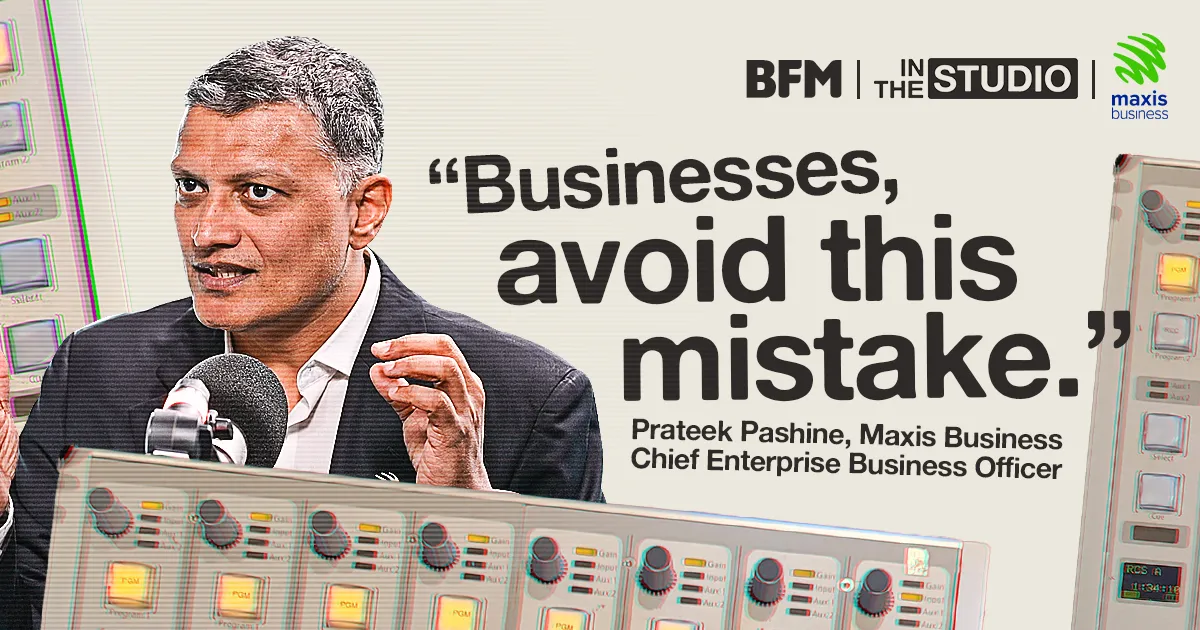5G to Facilitate Boom in Smart Buildings
Smart buildings are no longer a futuristic dream. With the emergence of 5G and the array of technological solutions in the market, the reality of a smart city is closer than it seems. But baby steps are needed to reach that potential and a good place to start is by normalising smart buildings.
A smart building is one in which systems are connected to automate and improve the productivity and efficiency of the building. It is something that is already happening today but on a limited scale.
With the inevitable arrival of 5G, these fixtures will become the norm. But before that can happen, infrastructure needs to be incorporated with digitalisation hardware and software. It sounds like a giant task, but it need not be.
Future-proofing surveillance
Taking the system one level up is incorporating buildings with smart solutions that can facilitate surveillance activities. Maxis, a significant 5G player and enabler, strongly believes in harnessing the power of technology to enable all companies to always be ahead.
Penang State Secretary Datuk Abdul Razak Jaafar says the biggest issue is viewing CCTV footage, as it can be done only in the Komtar control room. This means one person has to be stationed there at all times and roving teams cannot view the system on the go.
He points out that no security personnel would be able to review all of the footage thoroughly all the time. And if a potential problem occurs, a security personnel would then be required to assess the situation in person.
He says: “The benefit [of the CCTV] comes into play only after a crime has been committed. Stored video feeds are referred to only after the security breach has already occurred. The team would be required to scrub all footage at the given period of time to review where the cause of the breach started.
“This function was sufficient previously, but as concerns for public safety and security rise, adapting and innovating is required, especially in the new normal.”
With the Covid-19 pandemic yet to be contained and with rules for public health and safety in place, Komtar’s building management team has been forced to adapt. Komtar partnered with Maxis’s Smart Security solution and initially assumed that a hardware change was required to produce advancements or improvements. But this was not the case.
Abdul Razak says: “Maxis’s digital transformation was an eye-opening experience, as the solution is software-based and digitises the existing video feed from our current cameras.
“Once they have pulled the video feed, the software then performs the analytics required on the back end. With this approach, almost any type of camera in the market, be it old or new, can adopt Maxis’s Smart Security solution.”
The solution leverages its own form of artificial intelligence (AI) that performs analytics on the video. Parameters can be set within the solution to detect specific scenarios or events that Komtar specifies to Maxis, such as potential intrusions, overcrowding, loitering or left objects.
This then helps reduce the margin for human error, as a security guard is no longer required to constantly look through multiple camera feeds to detect unusual activity.
“The solution assists in increasing the response rate of our security personnel and the safety of all our building occupants,” says Abdul Razak.
The height of the potential of 5G in the safety sector will be the incorporation of Internet of Things (IoT) devices, as this will be one of the enablers for smart buildings. Paired with 5G, it will enable the connection of a huge amount of devices and sensors, with the ability to process data in real time.

Maxis’s Smart Building solutions will be deployed in phases, says Abdul Razak, targeting low-hanging fruits where the benefits are immediately seen. This will show customers the capabilities of the technology from the return of investment received.
“This proof of concept is just the tip of the iceberg. When 5G is ready, we hope to be able to scale this to enable all personnel to perform efficiently and take pre-emptive measures in real-time. Ultimately, the goal is for a safer state and nation,” he says.
Automating energy efficiency
Imagine buildings with fixtures that operate like a Fitbit, measuring different metrics to identify when something is not functioning well. With these fixtures, you will be able to distribute energy efficiently, saving on cost and increasing security.
In 2017, the founders of Plus Solar Systems Sdn Bhd set up a system called Source, an energy performance management system, to measure the energy flow in structures and make the necessary adjustments to maximise efficiency. The system takes advantage of advancements in IoT and machine learning technology.
Ryan Oh, co-founder and chief technology officer of Plus Solar, says Source provides benefits such as operating cost reduction and 25% energy savings on top of solar savings. With Source, business owners can achieve smart energy savings through the 3S concept: simple, smart and savings.
Plus Solar offers three types of service: an energy monitoring system that enables customers to turn energy data into 30% savings; a system that automates energy consumption; and a system that enables heat ventilation air conditioning (HVAC) savings of up to 25% from automating building energy consumption.
One of Plus Solar’s clients, Shell Maju, garnered HVAC savings of 25%. It is pleased with the smart pedestrian detection and automated adjustment of its HVAC system, which allows it to maintain climate conditions at a satisfactory level and yet achieve great energy savings, Oh shares.
Another client, Tan Kian Huat Fishery, used Source to help it save up to 20% of maximum demand, which is crucial in current economic conditions.
“These maximum demand-related costs translated into RM8,000 to RM9,000 shaved off its monthly utility bills. The solution has helped them monitor and manage the energy usage of their premises and, with the obtained data, enabled them to better distribute and plan energy usage,” Oh says.
Will smart buildings thrive?
The full potential of 5G has not been realised. Maxis head of enterprise products Selvakumar Rajasekaran says, “With 5G comes lower latency, improved speeds and reliability compared with 4G.” Not only does this enable new advancements (such as 4K video surveillance, intelligent drones, augmented reality, virtual reality simulations for emergency situations and energy control sensors), it can also enable more synergies between machines and sensors for producing follow-up actions related to each sensor.
“5G has the potential to accelerate digitalisation and automation across many industries in Malaysia. In the future, there will be more new services that require massive connections such as smart cities, smart sensors/meters, industrial automation and control, critical communications and more.”
When it comes to public awareness, Oh believes commercial and industrial buildings will take two to three years to ride the wave. This short timeframe is due to the fact that more building operators are aware of the benefits of an energy performance management system like Source.
Oh says the availability of 5G infrastructure should reduce the cost of implementing and enhancing the service availability of IoT systems.
The future of smart cities will not be far, says Selvakumar. An example is the use of AI cameras to detect traffic jams with AI to intelligently re-route traffic, versus deploying a policeman. With the availability of 5G, vehicle-to-vehicle communication and intelligent safety systems will become possible.
“There are many opportunities to fully leverage the power of IoT, AI, robotics, big data and analytics, cloud, AR and other emerging technologies. With such applications, townships and services will become smarter as they integrate high-tech solutions powered by 5G, changing the way citizens live, work and play,” says Selvakumar.
Realising the promise of smart cities requires a collaborative approach and partnerships in a robust digital ecosystem, between the right global players, local vendors, telco operators and authorities with a shared mindset of accelerating the 5G future. Players can leverage each other’s strengths in market-leading innovation for the multi-faceted aspects of a thriving smart city and digital ecosystem.
At the 5G Malaysia Showcase in Putrajaya and International Digital Economy Conference Sarawak (IDECS) in 2019, Maxis showcased applications of IoT via smart water and electric meters, smart lighting, smart campus, smart vehicle management, and track and trace of wanted suspects in public locations, among other solutions. In the Putrajaya showcase, Maxis demonstrated how 5G-enabled drones equipped with HD cameras can capture a live 4K video broadcast of its surroundings, as well as a robotic arm that can be used to detect and assess potential threats or hazardous materials and remotely handle them.
At IDECs last year, Maxis entered into a partnership with Sarawak Multimedia Authority (SMA) for collaboration on IoT and NB-IoT initiatives to help Sarawak advance its digital economy agenda. These initiatives included co-developing expertise as well as sharing experience and knowledge on proven applications of IoT and NB-IoT concepts, and developing a strong ecosystem to build sustainable and smart solutions.
“We are excited at the potential of 5G in a future of smart solutions, and we are committed to delivering the best 5G innovations that benefit all people and businesses in Malaysia. We are keen to be a strong partner to enterprises and government through our leadership in networks, digital services and connectivity solutions. This is in line with our commitment to bringing the best of technologies to help the nation stay ahead in a dynamically changing world,” says Selvakumar.
This article was originally published in The Edge on 28 December 2020.
Learn more about






